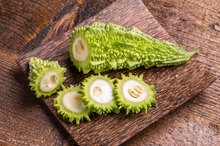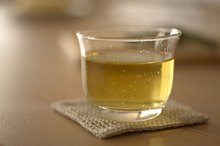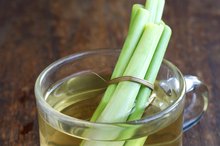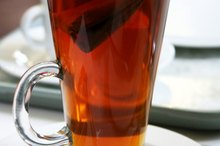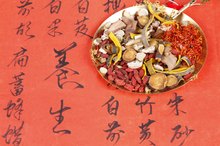What does fact checked mean?
At Healthfully, we strive to deliver objective content that is accurate and up-to-date. Our team periodically reviews articles in order to ensure content quality. The sources cited below consist of evidence from peer-reviewed journals, prominent medical organizations, academic associations, and government data.
- Phytotherapy Research: Lapacho Tea (Tabebuia impetiginosa) Extract Inhibits Pancreatic Lipase and Delays Postprandial Triglyceride Increase in Rats.
- Phytotherapy Research: Lapacho Tea (Tabebuia impetiginosa) Extract Inhibits Pancreatic Lipase and Delays Postprandial Triglyceride Increase in Rats.
The information contained on this site is for informational purposes only, and should not be used as a substitute for the advice of a professional health care provider. Please check with the appropriate physician regarding health questions and concerns. Although we strive to deliver accurate and up-to-date information, no guarantee to that effect is made.
Lapacho Tea Benefits
Lapacho, which is also referred to as pau d'arco, is an evergreen tree that is native to South America. The inner bark and wood of the tree has been used medicinally for centuries and it is dried and sold as a tea today, for a variety of health purposes. As with any herbal product, consult your health-care practitioner before attempting to self-medicate with lapacho.
If you are experiencing serious medical symptoms, seek emergency treatment immediately.
Active Ingredients
The active constituents of lapacho are thought to be the two compounds lapachol and beta-lapachon, as well as their derivatives. Lapachol and beta-lapachon appear to demonstrate anti-inflammatory, antimalarial and immune-modulating activity. The University of Maryland Medical Center states that lab tests suggest that they also have antimicrobial properties and may therefore help to kill bacteria, fungi, viruses and parasites 2. Lapacho tea also demonstrates antioxidant activity and may help to prevent free radical-induced damage to your cells and DNA.
- The active constituents of lapacho are thought to be the two compounds lapachol and beta-lapachon, as well as their derivatives.
- The University of Maryland Medical Center states that lab tests suggest that they also have antimicrobial properties and may therefore help to kill bacteria, fungi, viruses and parasites 2.
Uses
Essiac Tea Side Effects
Learn More
One peer-reviewed, study, from the December 2012 issue of "Phytotherapy Research," found that lapacho tea helped control blood triglyceride levels in rats. Lapacho is also used to help reduce pain and treat inflammatory disorders such as inflammatory bowel disease, arthritis, prostatitis and rheumatism. In addition, the tea is purported to promote the healing of boils, ulcers and other wounds. These uses are based largely on anecdotal reports and historical use however, and not on solid scientific evidence.
- One peer-reviewed, study, from the December 2012 issue of "Phytotherapy Research," found that lapacho tea helped control blood triglyceride levels in rats.
Infectious Disorders
In addition, people drink lapacho tea to help treat viral respiratory infections including the common cold, flu and swine flu. More research needs to be done to confirm the efficacy of lapacho tea for these purposes, however.
Precautions
What Are the Health Benefits of Gohyah Tea?
Learn More
When consumed at recommended doses, lapacho tea is unlikely to cause:
- side effects
- but anemia
- nausea
- diarrhea
- dizziness have been reported
Excessive amounts of lapacho tea, exceeding 1.5 g of bark and wood per day, may cause bleeding and vomiting. Lapacho may have anti-clotting properties, and it may therefore have an additive effect with anticoagulant drugs and increase the risk for bleeding. It may also increase the risk for hemorrhaging in post-surgery patients and “Natural Medicines Comprehensive Database” recommends stopping the use of lapacho two weeks before any surgical procedure 1. Finally there is currently insufficient reliable evidence regarding the safety of lapacho tea for pregnant women, and they should only drink it under the recommendation of a qualified health-care practitioner.
- When consumed at recommended doses, lapacho tea is unlikely to cause: * side effects
* but anemia
* nausea
* diarrhea
* dizziness have been reported Excessive amounts of lapacho tea, exceeding 1.5 g of bark and wood per day, may cause bleeding and vomiting.
Related Articles
References
- "Natural Medicines Comprehensive Database”; Therapeutic Research Faculty; 2011
- University of Maryland Medical Center: Pau D'arco
- "Prescription for Nutritional Healing"; Phyllis A Balch, CNC, and James F. Balch, MD; 2003
- Phytotherapy Research: Lapacho Tea (Tabebuia impetiginosa) Extract Inhibits Pancreatic Lipase and Delays Postprandial Triglyceride Increase in Rats.
Writer Bio
Megan Ashton began writing professionally in 2010. When she isn’t writing, she works with clients as the owner of Total Health & Hypnotherapy. She graduated from Western University with a Bachelor of Arts in communications then continued her education at the Canadian School of Natural Nutrition, where she became a Registered Holistic Nutritionist. Megan is also a Clinical Hypnotherapist.

